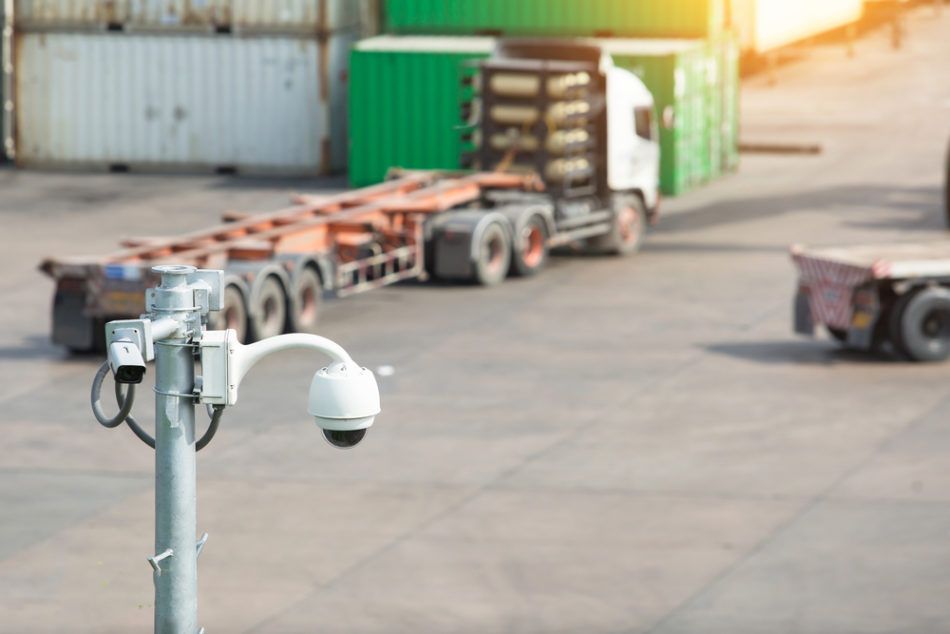Amid Talk of Space Force, America’s Satellites Still Need Stronger Cybersecurity
The biggest threat to national security resides 26,000 miles from the U.S. mainland — distributed across the United States’ 658 active satellites....
3 min read
 Craig Badrick
:
Jul 24, 2018 5:38:52 AM
Craig Badrick
:
Jul 24, 2018 5:38:52 AM

The potential of mobile enterprise systems to improve productivity and efficiency has made them an essential business function in 2018, but big growth means big changes that organizations must be ready for.
In a market increasingly driven by connectivity, it is no great surprise that the global mobile enterprise application market is set to more than double its 2016 value by 2021. The access to real-time information and potential for greater productivity make mobile technology a top priority for any company intent on becoming a serious market player.
But with the rise of mobile enterprise data also comes the fall of traditional local area networks (LANs). LAN-based systems, which are centered around individual buildings or campuses, enable IT professionals to implement any number of “outer wall” security measures to ward off external threats.
As LAN-based systems fall out of favor, though, security professionals must adapt in order to address the numerous cybersecurity concerns around mobile technology. That includes employees’ use of unsecured networks and hackers’ ability to reach the network via backdoors, to name a few.
In a world that is more and more dependent on wireless connectivity, IT pros must evolve as quickly as new technologies do. Here are five big changes on the horizon to prepare for.
The Internet of Things (IoT) refers to the growing number of devices equipped to access the internet. These include “smart plugs,” “smart locks,” and “smart home” devices such as Google Home and Amazon Alexa. Research suggests that 50 billion devices will be connected to the IoT by the year 2020, at which point the global IoT market will register approximately $14.5 trillion in annual sales.
But while smart devices offer plenty of benefits, including ease of use and energy-saving potential, security professionals must remain alert to the risks that they present. For starters, the sheer increase in data flow between such a high number of connected devices — especially considering the lack of standardization in the architectural framework — calls for heightened security measures and vigilance.
The Chief Data Officer (CDO) is responsible for generating value from the massive quantities of data that medium-to-large corporations depend on to transform and grow. Traditionally, his or her role has been to leverage new technologies to help streamline business processes and/or ensure overall data quality, but the rise of mobile enterprises represents an added challenge for the CDO.
As workplaces become increasingly wireless and the IoT market continues to grow, the CDO’s role must evolve to include improving the culture of corporate security. In short, CDOs must work with qualified security professionals to develop and adopt new security tactics that keep their companies’ data safe.
With the rise of the cloud have come increased obstacles to network visibility. End-to-end visibility is crucial to both the productivity and security of a network, but given that one in four companies that use a cloud solution admit to having had their data stolen, it’s clear that many companies are lacking the security infrastructure that cloud systems require.
And despite these security concerns, 97% of IT professionals say that their company runs at least some processes in the cloud. While the cloud is here to stay, the risks associated with it don’t have to be — partnering with a managed IT services provider can be an easy first step towards implementing comprehensive visibility into your cloud usage.
The average North American enterprise fields around 10,000 daily security alerts — far more than a human IT team could possibly process. That’s why many believe that artificial intelligence and machine learning may be the future of cybersecurity. As the number of connected devices continues to grow, AI might offer the solution that IT professionals need to stop constantly responding to false threats and start dedicating their time to analytical and creative tasks.
That being said, as more companies implement AI technology as a cybersecurity measure, hackers and cybercriminals’ access to AI will increase as well. Companies thus should team up with proven experts to ensure that they aren’t outmatched in an escalating arms race.
Data privacy is a hot-button issue in 2018. The Cambridge Analytica scandal recently brought to light just how irresponsible some companies are with their private data, and the General Data Privacy Regulation (GDPR) completely reshaped Europe’s data regulatory framework. In the wake of big data’s continued rise, companies must take proactive steps to strengthen data security, protect consumers, and maintain a basis of trust.
Unfortunately, securing data on a massive scale requires much more than just the standard security measures — IT teams must perform ongoing monitoring and audits in order to uncover potential areas of vulnerability, a responsibility that they are often too overburdened to take on. That’s why outsourcing this task to the industry experts may be the best solution.
At Turn-key Technologies (TTI), we have decades of experience in the business of data protection, and we can offer you true network security in the era of Big Data. By leveraging any of our wide array of network solutions, you can protect yourself from the risks of cybercrime and keep up with the competition. By partnering with TTI, you can rest assured you’re keeping your customers and employees safe and your network at peak performance.

The biggest threat to national security resides 26,000 miles from the U.S. mainland — distributed across the United States’ 658 active satellites....

From AI security cameras to biometric access controls, these IoT devices can help prevent warehouse theft and safeguard employees. The Internet of...

Smart surveillance is cheaper than ever, but is your network ready for the latest security tech? The costs of security system hardware and software...